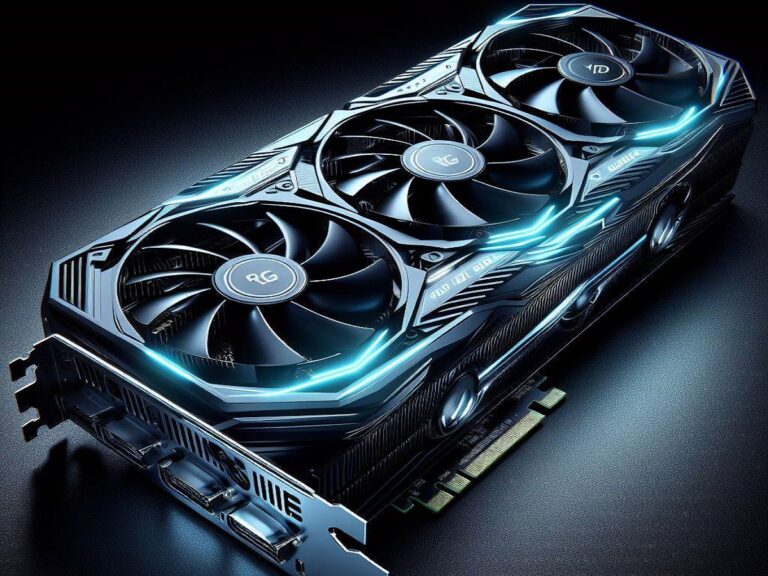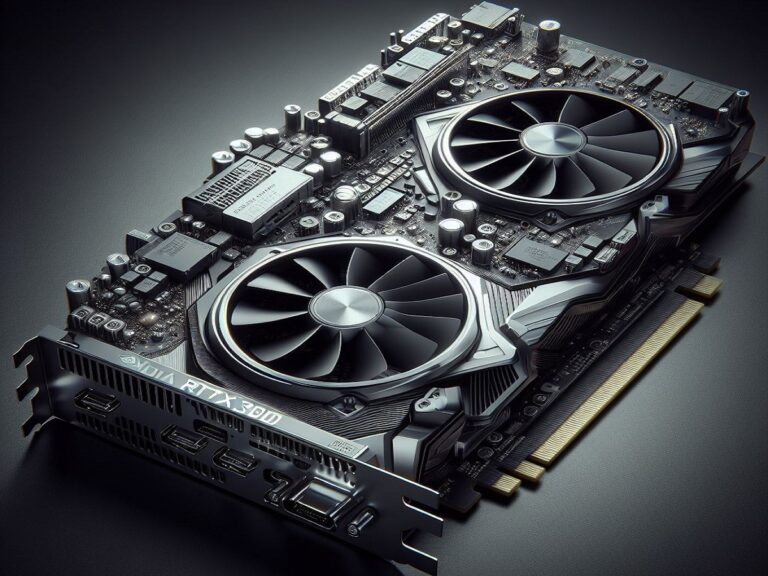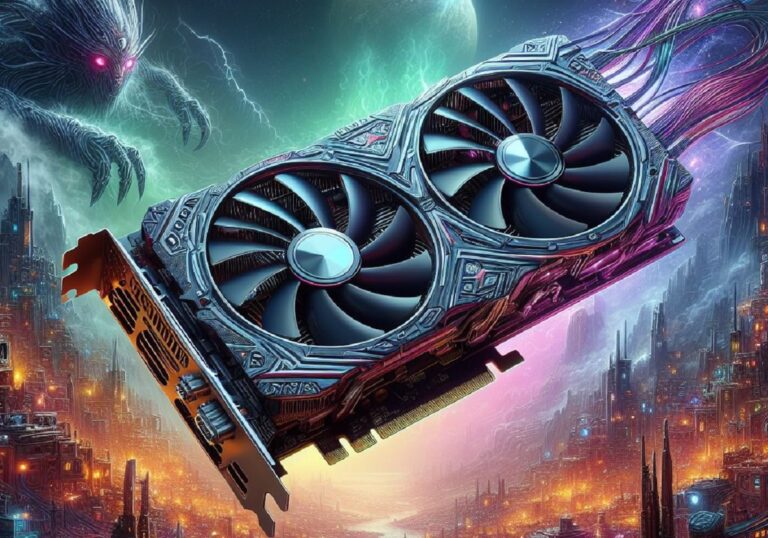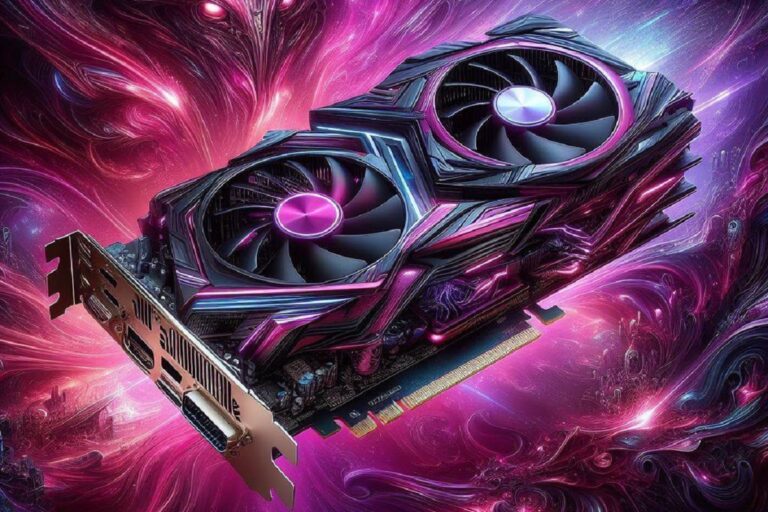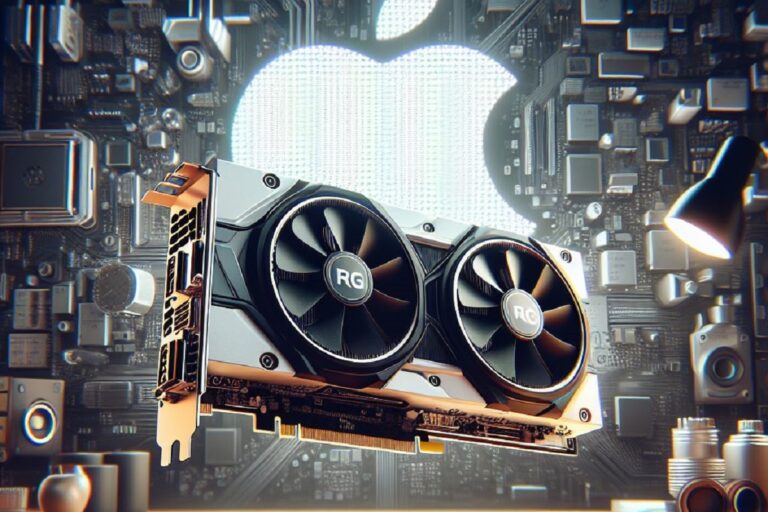Ever hit that “render” button and brace yourself for a painfully long wait? Choppy playback and sluggish editing software can seriously stifle your creative flow. But fear not, video editors and photo enthusiasts! The culprit might be your graphics card, and a powerful upgrade can be the game-changer you need.
Here’s the good news: you don’t have to break the bank to experience a smoother, faster editing experience. In this guide, we’ll break down everything you need to know about choosing the perfect graphics card for your editing needs. We’ll explore key features, popular options across different budgets, and answer frequently asked questions to empower you to find the ideal card to supercharge your creativity.
So, ditch the editing frustrations and get ready to unlock your full creative potential. Let’s dive in and find the graphics card that will turn your editing nightmares into a smooth and satisfying workflow!
1. EVGA GeForce GTX 1660 SC Ultra Gaming
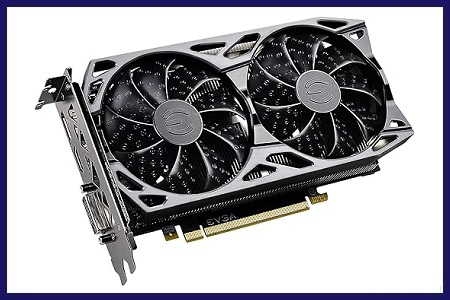
Key Features
Gamers on a budget, rejoice! The EVGA GeForce GTX 1660 SC Ultra Gaming hits the sweet spot between performance and price. It’s not the flashiest graphics card on the block, but it delivers excellent performance for 1080p gaming at high settings, and can even handle some 1440p titles on moderate settings.
For those who prioritize smooth gameplay at 1080p without breaking the bank, the GTX 1660 SC Ultra Gaming is a compelling choice. NVIDIA’s Turing architecture and 6GB of GDDR6 memory ensure you can crank up the settings in your favorite games and maintain fantastic frame rates.
The GTX 1660 SC Ultra Gaming isn’t just a 1080p powerhouse. It can handle some 1440p games on moderate settings, making it a versatile option for gamers who might upgrade to a 1440p monitor in the future. Plus, the compact design makes it perfect for smaller PC cases, ideal for minimalist builds or those with limited space.
Keeping cool under pressure is EVGA’s efficient SC Ultra cooling system. This dual-fan setup ensures the card stays quiet and chilled, even during intense gaming sessions.
However, if having the latest ray tracing technology for realistic lighting effects is a priority, you might need to look towards the higher-end RTX series cards. The GTX 1660 series doesn’t support ray tracing.
The EVGA GeForce GTX 1660 SC Ultra Gaming is a solid choice for budget-minded gamers who prioritize smooth 1080p gameplay. It delivers excellent performance at a competitive price, boasts a compact design, and stays cool under pressure. Keep in mind the lack of ray tracing, but for those focused on achieving high frame rates at 1080p, this EVGA card is a strong contender.
2. MSI Gaming GeForce GTX 1650 128-Bit
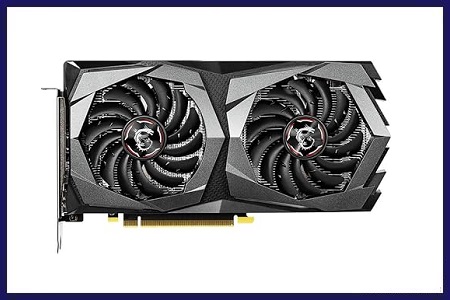
Key Features
Calling all budget-minded gamers and those seeking a capable 1080p graphics card, the MSI Gaming GeForce GTX 1650 D6 Gaming X is your answer! It’s not a high-end champion for ray tracing or the latest titles, but it excels at delivering smooth performance in popular games at 1080p resolution.
The GTX 1650 D6 Gaming X strikes a perfect balance between affordability and performance. Packing NVIDIA’s Turing architecture and 4GB of GDDR6 memory, you can enjoy high settings and fluid frame rates in many popular esports and older AAA titles at 1080p.
The MSI GTX 1650 D6 Gaming X boasts a compact design, making it a great choice for smaller PC cases. This is a major plus for gamers with limited space or those who prefer a minimalist build. Even during intense gaming sessions, the GTX 1650 D6 Gaming X stays remarkably cool and quiet thanks to its dual-fan cooling system. This ensures a peaceful gaming environment without overheating worries.
While not the most powerful VR card on the market, the GTX 1650 D6 Gaming X can still handle some VR experiences. This makes it a potential stepping stone for those curious about exploring virtual reality.
Keep in mind that the GTX 1650 D6 Gaming X isn’t designed for the most demanding games at the highest settings. Frame rates might dip in newer titles, and it lacks ray tracing capabilities for the latest lighting effects.
The MSI Gaming GeForce GTX 1650 D6 Gaming X is a compelling choice for budget-conscious gamers who prioritize smooth 1080p performance. It delivers excellent value for the price, boasts a compact size for wider compatibility, and keeps cool under pressure. If you’re looking for a solid 1080p performer without breaking the bank, the MSI GTX 1650 D6 Gaming X is a strong contender. However, for those chasing the highest settings in cutting-edge titles or desiring ray tracing, a higher-end card might be necessary.
3. MSI Gaming GeForce RTX 3090 24GB GDRR6X
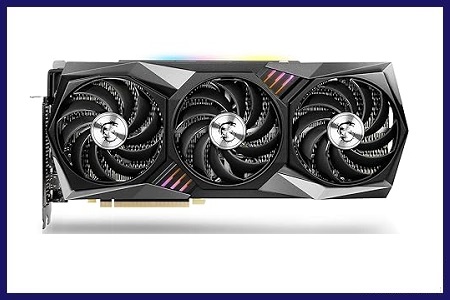
Key Features
Gamers and creative professionals, prepare to be amazed! The MSI Gaming GeForce RTX 3090 24GB GDRR6X is a monster graphics card offering top-of-the-line performance for the most demanding tasks. Buckle up, because whether you’re a hardcore gamer craving silky smooth frame rates at 4K resolution with all the bells and whistles enabled, or a video editor working with complex 8K projects, this card is a serious contender.
The RTX 3090 24GB boasts NVIDIA’s Ampere architecture and a whopping 24GB of GDDR6X memory. This translates to insane performance in even the latest AAA titles at 4K resolution with maximum settings. Expect butter-smooth frame rates and stunning visuals, allowing you to immerse yourself in your favorite games like never before.
But the RTX 3090 24GB isn’t just a gaming beast. It’s also a dream machine for creative professionals. The massive memory buffer and powerful processing capabilities make it ideal for tasks like video editing, 3D rendering, and complex design work. Whether you’re editing high-resolution footage or creating intricate 3D models, this card can handle it all with ease.
Packing this much power inevitably generates heat, but MSI equips the RTX 3090 24GB with their robust Tri-Frozr 2 cooling system. This triple-fan setup ensures the card stays cool and quiet even during intense workloads, letting you focus on the task at hand without worrying about overheating.
The MSI RTX 3090 24GB boasts a premium design with a sleek metal shroud and RGB lighting. It’s a looker that will complement any high-end gaming PC build.
Let’s be honest, the MSI RTX 3090 24GB is a top-of-the-line card with a price tag to match. It’s an investment for serious gamers and creative professionals who demand the absolute best performance.
The MSI Gaming GeForce RTX 3090 24GB is a phenomenal graphics card for those who require the ultimate in performance. It delivers exceptional power for gamers seeking the smoothest 4K experience and creative professionals working on demanding projects. The robust cooling system ensures stability, and the design exudes a premium feel. However, the hefty price tag makes it a significant investment. If you have the budget and require the absolute best, the MSI RTX 3090 24GB is a champion contender.
4. MSI Gaming Radeon 550 64-Bit
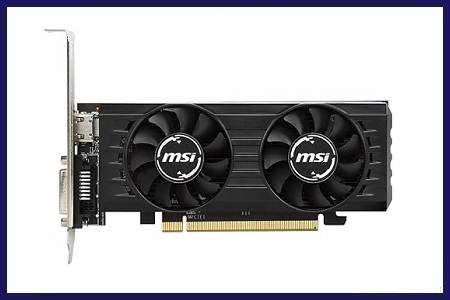
Key Features
The MSI Gaming Radeon 550 2GT LP OC caters to a specific niche. It’s not a champion for high-end video editing or demanding games on high settings, but it offers advantages for those seeking a basic upgrade for an older PC or a simple solution for everyday tasks and casual gaming.
On a tight budget and looking to breathe new life into an older PC struggling with everyday tasks like web browsing or watching videos? The MSI Radeon 550 can be a significant improvement over integrated graphics, offering a smoother experience for basic uses.
The MSI Radeon 550’s biggest strength is its affordability. It’s a very budget-friendly option, making it a good choice for those who just need a basic graphics card. While not ideal for the latest titles at high settings, the Radeon 550 can handle some older games and esports titles at lower settings, making it a possibility for casual gamers on a budget.
The MSI Radeon 550 features a compact design, making it suitable for smaller PC cases. This is a plus for gamers who have limited space or prefer a more minimalist build. Technically, the Radeon 550 is VR ready, but don’t expect a flawless experience. It might struggle with some more demanding VR titles.
Keep in mind that the MSI Radeon 550 isn’t suitable for modern gaming at high settings or demanding video editing. It’s a basic card for everyday tasks and casual gaming.
The MSI Gaming Radeon 550 2GT LP OC is a suitable choice for budget-minded users who need a basic upgrade for an older PC. It handles everyday tasks and light gaming at lower settings well. However, gamers and those who do demanding video editing should look elsewhere.
5. Zotac Gaming Graphics Card GEFORCE RTX 3060
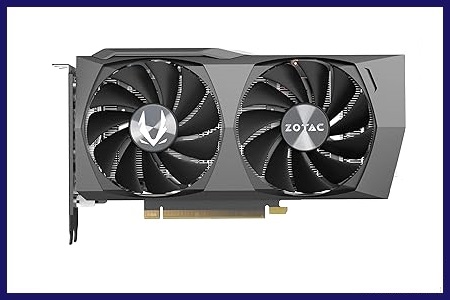
Key Features
Gamers, listen up! The Zotac Gaming GeForce RTX 3060 is a serious contender for those seeking buttery-smooth 1080p performance and capable 1440p gaming at a competitive price. It might not be the flashiest option on the block, but it packs a punch for popular titles, making it a great choice for value-conscious gamers.
The Zotac RTX 3060 boasts NVIDIA’s Ampere architecture and a whopping 12GB of GDDR6 memory. This translates to amazing performance in even the latest AAA games at 1080p resolution with high settings. Get ready for smooth frame rates and stunning visuals that will immerse you in your favorite games. While not an absolute powerhouse for 1440p, the RTX 3060 can handle some titles at moderate settings, making it a versatile option for gamers who might upgrade to a 1440p monitor later.
Keeping cool under pressure is important, and Zotac equips the RTX 3060 with their efficient cooling system. This ensures the card stays cool and quiet even during intense gaming sessions. No more overheating worries, just a peaceful gaming environment to focus on your victories.
The Zotac RTX 3060 is also VR ready, opening the doors to explore exciting virtual reality experiences. It might not be the most powerful VR card on the market, but it can handle some VR games, making it a potential stepping stone for VR enthusiasts.
It’s important to note that some Zotac RTX 3060 models might lack features like fancy RGB lighting or multiple display outputs compared to other RTX 3060 options. Consider your priorities when choosing a specific Zotac RTX 3060 model to make sure it checks all your boxes.
The Zotac Gaming GeForce RTX 3060 is a strong contender for budget-minded gamers who prioritize smooth 1080p performance with the potential for some 1440p gaming in the future. It delivers excellent value, boasts efficient cooling, and is VR ready. If you’re looking for a solid 1080p performer without breaking the bank, the Zotac RTX 3060 is a strong contender. However, for those who crave the most bells and whistles or prioritize the highest settings in cutting-edge titles at 1440p and above, a higher-end card might be necessary.
6. ASUS GeForce RTX 2060 Overclocked 6G GDDR6
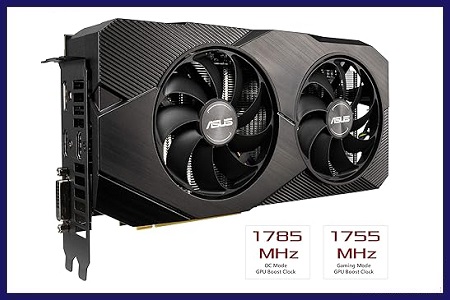
Key Features
Gamers on a budget, listen up! The ASUS GeForce RTX 2060 Overclocked 6G GDDR6 strikes a brilliant balance between performance and price. It’s not the top dog in the graphics card world, but it excels at delivering smooth gameplay in popular titles at 1080p resolution with high settings. Here’s why the ASUS RTX 2060 might be your perfect match:
Packed with NVIDIA’s Turing architecture and 6GB of GDDR6 memory, the ASUS RTX 2060 lets you crank up the settings and enjoy fluid frame rates in many popular esports and AAA games at 1080p. This makes it a compelling choice for gamers who prioritize a smooth 1080p experience without breaking the bank.
But the ASUS RTX 2060 isn’t just a 1080p powerhouse. It can handle some 1440p games on moderate settings, making it a versatile option for gamers who might upgrade to a 1440p monitor in the future, but still want a card that performs well at 1080p now.
Even during intense gaming sessions, the ASUS RTX 2060 stays remarkably cool and quiet thanks to its efficient cooling system. This ensures a peaceful gaming environment without worrying about overheating.
The ASUS RTX 2060 also supports ray tracing, the latest lighting technology that simulates realistic lighting effects. While not the most powerful for ray tracing, it lets you experience this new technology in some games, giving you a taste of the future of graphics.
Keep in mind that the ASUS RTX 2060 isn’t designed to run the most demanding games at the absolute highest settings with ray tracing enabled. You might need to turn down some settings or ray tracing in newer, graphically intensive titles.
The ASUS GeForce RTX 2060 Overclocked 6G GDDR6 is a compelling choice for budget-minded gamers who prioritize smooth 1080p performance with the potential for some 1440p gaming in the future. It delivers excellent value, boasts a cool and quiet operation, and even lets you dabble in ray tracing. If you’re looking for a solid 1080p performer at a competitive price, the ASUS RTX 2060 is a strong contender. However, for those chasing the highest settings and maxing out ray tracing in cutting-edge titles, a higher-end card might be necessary.
FAQs
What factors should I consider when choosing a graphics card for video editing?
Performance: Look for a card with a powerful GPU and ample GDDR6 memory (at least 8GB). This ensures smooth editing, faster rendering times, and better handling of complex effects.
Compatibility: Ensure your chosen graphics card is compatible with your motherboard and editing software. Check for factors like PCI Express slots and driver support.
Ports: Consider the ports you need for connecting monitors and other devices. Common options include HDMI, DisplayPort, and USB-C.
Cooling: Choose a card with an efficient cooling system to avoid overheating during extended editing sessions.
Power Supply: Make sure your power supply unit (PSU) has enough wattage to handle the power requirements of the graphics card.
Do I need the most high-end graphics card for video editing?
Not necessarily. For basic editing of 1080p videos, a mid-range graphics card with 6GB of GDDR6 memory might suffice. However, for professional editing of high-resolution footage, 4K or 8K editing, complex 3D effects, or faster rendering times, a high-end card with 12GB or more of GDDR6 memory is recommended.
Are NVIDIA or AMD graphics cards better for video editing?
Both NVIDIA and AMD offer powerful graphics cards suitable for video editing. NVIDIA cards are generally known for their strong performance in creative applications, while AMD cards might offer better value for the price. Research specific models and their benchmarks for video editing software you use to make the best choice.
Is a CPU or graphics card more important for video editing?
While a powerful graphics card can significantly improve video editing performance, a strong CPU is equally important. The CPU handles encoding and decoding video files, applying effects, and multitasking. Aim for a well-balanced system with a powerful CPU and a graphics card that complements its capabilities.
Should I prioritize getting a new graphics card or CPU for video editing first?
This depends on your current setup and editing needs. Here’s a breakdown to help you decide:
Upgrade CPU first: If your current CPU struggles to handle basic video editing tasks like scrubbing through footage or applying simple effects, a CPU upgrade will likely offer the most significant performance boost.
Upgrade graphics card first: If your CPU is decent but video editing feels sluggish, especially when working with high-resolution footage, rendering complex effects, or experiencing slow export times, a graphics card upgrade might be more impactful.
Upgrade both: If you’re using an older system overall, consider upgrading both CPU and graphics card for a well-rounded performance increase. This is ideal for professional editors working with demanding projects.
Here’s a tip: Use online benchmarking tools to compare the performance of your current CPU and graphics card in video editing software. This can help you identify the bottleneck in your system and prioritize the upgrade accordingly.
